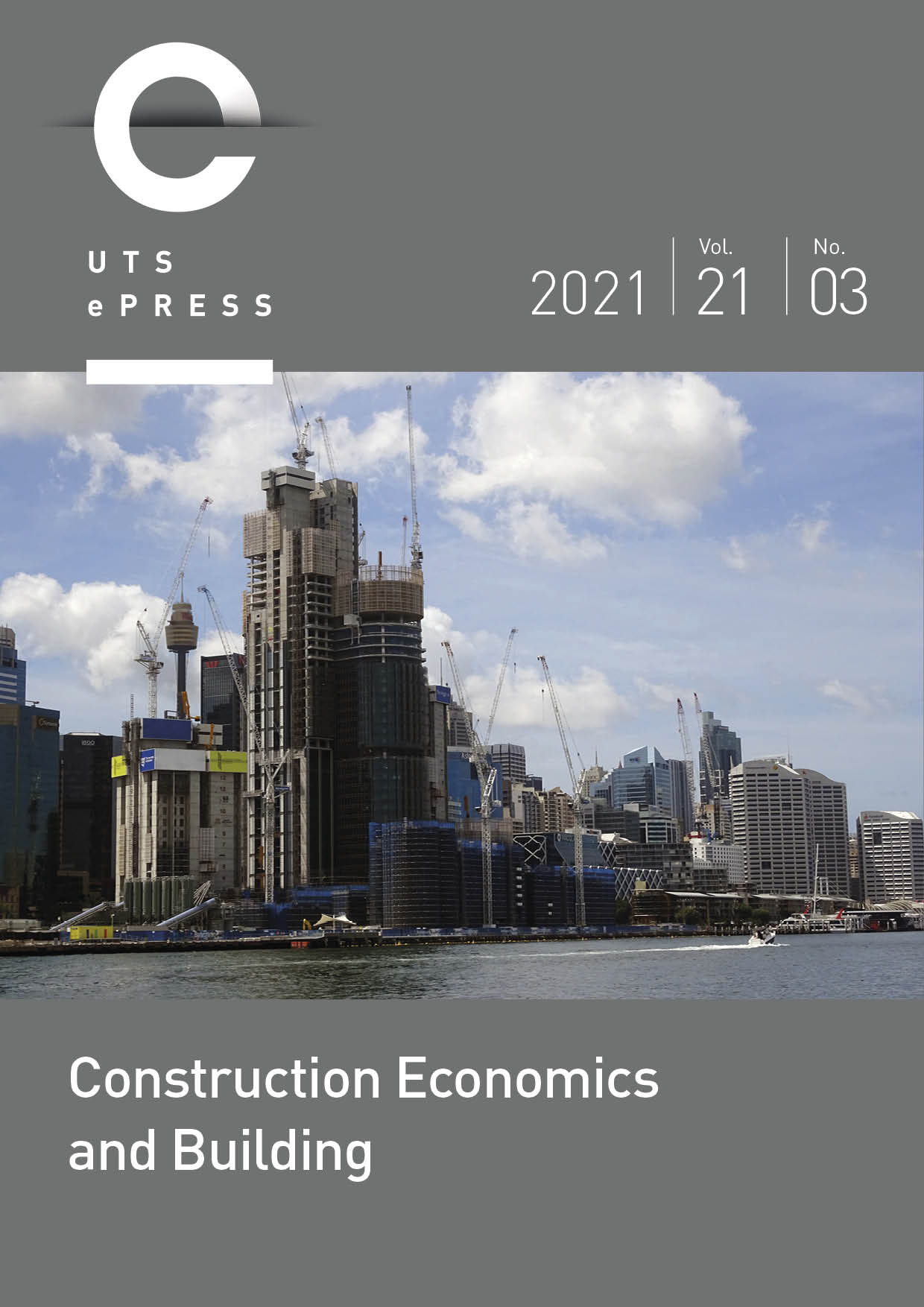Drivers of Applying Ecological Modernization to Construction Waste Minimization in New South Wales Construction Industry
Main Article Content
Abstract
The application of ecological modernization (EM) (to delink industry growth from environmental damage) to minimize construction waste has not been explored within the construction industry in general, and the New South Wales (NSW) construction industry in particular. This study seeks to identify the drivers of applying EM to construction waste minimisation (CWM) in the industry. Also, to determine the CWM measures that are critical for each of the drivers. A survey was adopted in this study to target stakeholders engaged in the delivery of construction projects in NSW from design to completion. The survey was selected to reach a large number of respondents within a manageable period. A pilot study was conducted to ensure the reliability of the research design before a full-scale data collection was launched. The data from 240 valid responses was analysed using factor analysis, relative importance index and descriptive statistics. The results revealed five important drivers for EM’s application to CWM. These are agents of change, government policies, supply chain dynamics, skill-building and technological innovations. The CWM measures that are critical for each of these drivers were also identified. The study provides insights into the application of EM to address the construction industry problem of waste generation as by-product of its growth. It also shows the ability to protect the environment while enabling continuous economic growth. Furthermore, it demonstrates the applicability of EM to minimize the construction waste of NSW construction industry.
Article Details
Section
Authors who publish with this journal agree to the following terms:
a) Authors retain copyright and grant the journal right of first publication with the work simultaneously licensed under a Creative Commons Attribution License that allows others to share and adapt the work with an acknowledgement of the work's authorship and initial publication in this journal.
b) Authors are able to enter into separate, additional contractual arrangements for the non-exclusive distribution of the journal's published version of the work (e.g., post it to an institutional repository or publish it in a book), with an acknowledgement of its initial publication in this journal.
c) Authors are permitted and encouraged to post their work online (e.g., in institutional repositories or on their website) prior to and during the submission process, as it can lead to productive exchanges, as well as earlier and greater citation of published work (See The Open Access Citation Advantage Service). Where authors include such a work in an institutional repository or on their website (ie. a copy of a work which has been published in a UTS ePRESS journal, or a pre-print or post-print version of that work), we request that they include a statement that acknowledges the UTS ePRESS publication including the name of the journal, the volume number and a web-link to the journal item.
d) Authors should be aware that the Creative Commons Attribution (CC-BY) License permits readers to share (copy and redistribute the work in any medium or format) and adapt (remix, transform, and build upon the work) for any purpose, even commercially, provided they also give appropriate credit to the work, provide a link to the license, and indicate if changes were made. They may do these things in any reasonable manner, but not in any way that suggests you or your publisher endorses their use.
